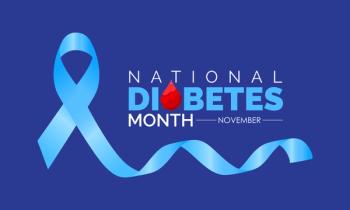
STRIPE Annual Meeting: Standardizing Clinical Utility in Pharmacogenetics
Jai N. Patel, PharmD, BCOP, CPP, discussed efforts to standardize the evaluation of clinical utility in pharmacogenetics, emphasizing its variability, the role of pharmacogenomics in research, and the importance of robust study designs for pharmacy professionals.
Pharmacy Times interviewed Jai N. Patel, PharmD, BCOP, CPP, director, Cancer Pharmacology & Pharmacogenomics, Levine Cancer Institute; associate professor at Wake Forest University School of Medicine; associate vice president, cancer research at Atrium Health Levine Cancer; and associate director of Shared Resources Management and member, Cancer Genetics & Metabolism at Atrium Health Wake Forest Baptist Comprehensive Cancer Center, on his participation in the Standardizing Laboratory Practices in Pharmacogenomics (STRIPE) Annual Meeting and Consensus Workshop at the headquarters of US Pharmacopeia (USP) in Rockville, Maryland. Patel discussed his role in chairing a workshop at the STRIPE Annual Meeting focused on standardizing the definition and evaluation of clinical utility in pharmacogenetics.
Patel highlighted the variability in how clinical utility is assessed across payers, regulatory bodies, and clinical guidelines, which stems from a lack of standardization. The STRIPE workshop aimed to create best practices for defining clinical utility by considering factors such as clinical benefits, patient populations, risks, costs, and the effectiveness of pharmacogenetic tests. He emphasized the need to clarify whether clinical utility should be assessed across all tested patients or only those with actionable genotypes and to evaluate the balance of benefits vs risks, including cost implications and efficacy impacts.
Patel also outlined the role of pharmacogenomics in drug development and post-marketing research. In early drug development, genetic factors are evaluated to guide dosing and assess pharmacokinetics, while post-marketing research investigates genetic variants associated with specific outcomes or adverse effects (AEs). This research helps validate the clinical utility of pharmacogenetic testing in practice.
Finally, Patel stressed the importance for pharmacy professionals to understand and evaluate various study designs, noting that while randomized controlled trials (RCTs) provide the highest level of evidence, alternative designs can offer robust insights when RCTs are infeasible or unethical.
Pharmacy Times: Could you share an overview of your workshop at the STRIPE Annual Meeting?
Jai N. Patel, PharmD, BCOP, CPP: So, I am helping to chair our study designs workshop. The impetus of this workshop is around a lot of the variability in how clinical utility is really defined and assessed and evaluated. This is clear when we look at the payer, the medical policies, the clinical practice guidelines, recommendations from the FDA, for example, where we see a lot of variability in terms of which pharmacogenetic tests are actually required or recommended or, again, covered by different payers. We believe that part of that variability is the lack of standardization in how pharmacogenetic tests are being evaluated in terms of their clinical utility, and again, how we define clinical utility. So, we're working with the team to basically develop some standards and best practices on number 1, again, how do we define clinical utility? What are the factors we need to consider, such as, obviously, the clinical benefits of doing the test, but in which patient populations? Is it across all tested patients? Is it in just those that are identified as having an actionable genotype? As well as what are the risks? What is the clinical risk of testing and receiving, let's say, a dose reduction? But also, the other contextual factors, like the cost. How many patients do you actually have to test before you see a benefit with whatever intervention is being proposed based off the genotype information? So again, that's a lot to really put into 1 definition, but once we do that, then we can put together the types of study designs and what are the comparator groups that we really should be assessing to make that determination of clinical utility.
Pharmacy Times: Can you explain some of the discussion surrounding the definition of clinical utility?
Patel: Parts of the discussion around clinical utility right now are identifying what patient population it should be defined in. Should it be across all tested patients versus not tested patients? Should it be in just those that are identified as having something actionable that you can actually intervene on, whether that's a reduced dose or alternative treatment? That's one aspect that we're sort of deliberating right now. As well as demonstrating that benefits outweigh risks, but then what are the risks are? Is it just the clinical risk alone, such as reducing the dose, and what impact that could have on, let's say, drug efficacy? But also, should it include the risk of increased health care cost? The cost associated with doing the genotyping, especially if it's a particular genetic variant that, let's say, is not very common. So, if it's very rare, you're going to have to genotype or screen a lot of patients before you identify one. Again, that could increase the potential cost. The magnitude of effectiveness of doing the testing, the prevalence of the toxicity. So, these are all considerations that we're really trying to nail down. Should it be part of that definition, or should it be evaluated separately?
Pharmacy Times: How are pharmacogenomics being used in clinical research?
Patel: Pharmacogenetic testing is used in different capacities in clinical research. As part of the drug development process, for example, pharmaceutical companies and manufacturers are looking at how their drugs are being affected by these types of pharmacogenes. So, if they identify in early phase trials and in preclinical studies, really, if their drug is metabolized by a cytochrome P450, for example, then really the next logical step, and there's guidance from the FDA that really provides steps on how to assess this and look at whether or not genetic differences impact overall drug exposure, pharmacokinetics, and potentially, whether genotype-guided dosing really should be part of phase 1, 2, and 3 clinical trials. That's sort of in the drug development phase. In the post-marketing phase, which is where the majority of pharmacogenomic research is being done, is kind of after the fact. So, we see that a particular drug is associated with a particular AE, maybe at an unreasonably high rate, or in a particular type of population based on race or ethnicity, certain ancestry groups. So, the immediate question is, why, right? Could that be due to genetics, and then doing genomic sequencing to identify [if] is there a particular genetic variant that is associated with an outcome of interest, and then actually doing prospective studies to validate that, and then that last piece is a clinical utility. If we can show that there's clinical validity, that there's an association between presence of a genetic variant and an outcome with a particular drug, the next step is demonstrating the actionability of using that genomic information to change prescribing, and then clinical utility—can you actually do the testing in practice? Does it inform changes in treatment in those that are so called biomarker positive, in the context of all those things that we talked about earlier, like cost, number needed to genotype, magnitude of effectiveness, etc.
Pharmacy Times: Is there anything else you would like to add?
Patel: I think pharmacy professionals should be aware of how to evaluate study designs. There are a number of different studies that come out from retrospective studies, even real-world evidence and data, prospective studies, randomized controlled clinical trials. Obviously, randomized controlled clinical trials are sort of the highest level of evidence, and those being included in things like systematic reviews and meta analyzes really provide pharmacists a great understanding about the potential clinical impact of a particular pharmacogenetic test, but understanding that there may be certain scenarios where randomized trials are simply not feasible or perhaps even unethical. So then, really trying to understand, well, what is the next type of study design that would be appropriate to do that still provides robust levels of evidence to demonstrate things like clinical utility?
Newsletter
Stay informed on drug updates, treatment guidelines, and pharmacy practice trends—subscribe to Pharmacy Times for weekly clinical insights.


















































































































































































































